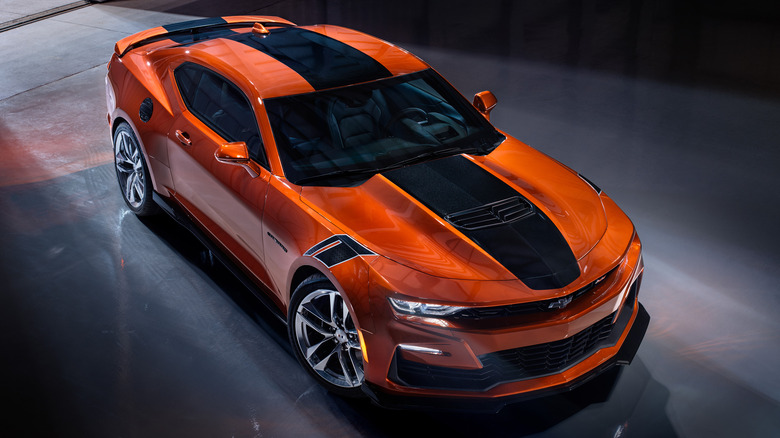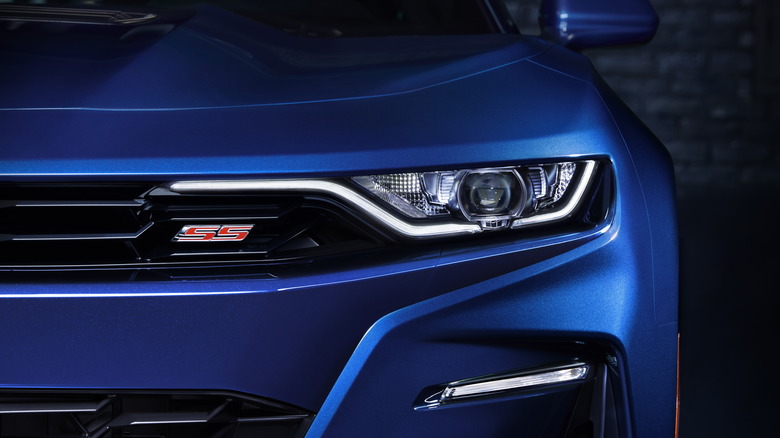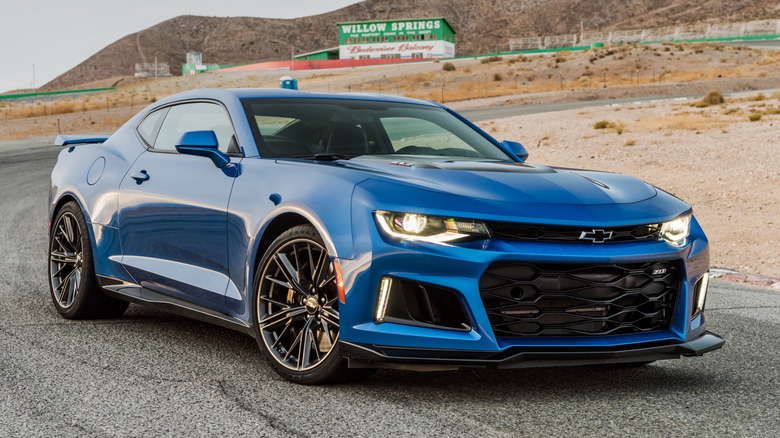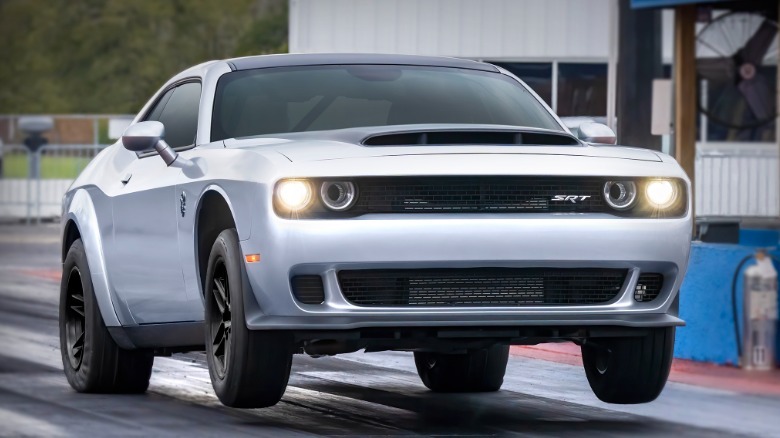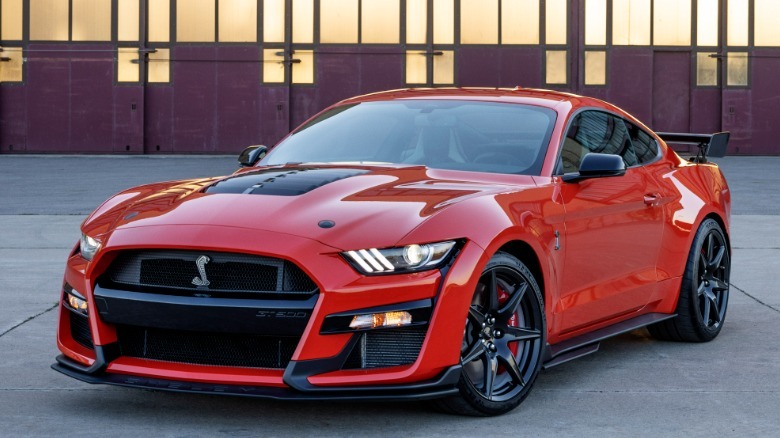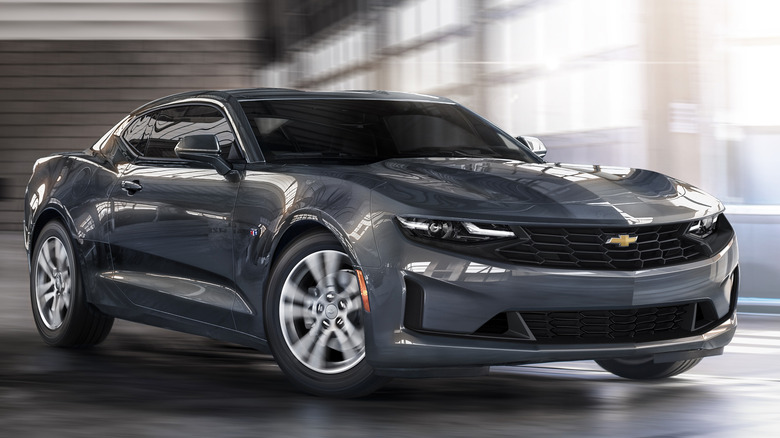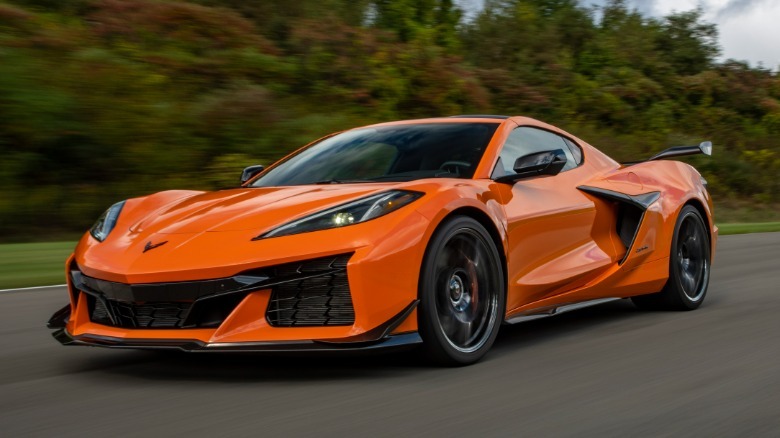Why The Sixth-Gen Camaro Never Reached True Muscle Car Status
The sixth-generation Chevrolet Camaro will officially shuffle off its mortal coil in 2024, marking a total of nine years on the market. With the lack of an immediate successor generation, this could mean it's the last Camaro for a while. Special editions to send out the generation with a bang are nice and all, but this generation of Camaro was perpetually behind not only other American muscle cars, but other Chevys as well, throughout just about all of the generation's history.
To understand how exactly the sixth generation Camaro fell short, you have to compare it to itself during prior generations, other contemporary models from Chevrolet and General Motors, and finally other muscle cars that out-Camaro'd the Camaro. With the Camaro's future in limbo and Stellantis phasing out the Challenger with a seemingly a dozen different special editions, the "winner" is really the Corvette — which Chevy continues to innovate on — and the Ford Mustang which will seemingly only leave Ford's lineup after the heat death of the universe.
The Camaro vs. itself
The Camaro itself has been a hit or miss affair over all six of its generations since 1967, when the car first rolled off the line. The very first Camaro was aggressive looking, had a big V8, and looked like it actually had a shot at defeating its arch-nemesis the Mustang at pony car supremacy. For the second generation, Chevy completely reinvented the Camaro with a radically different front grille, fewer engine choices, and that's about it. As time went on and economic times worsened, the Camaro got worse and worse with every model year throughout the 1970s.
The Camaro languished around until the 1980s, before GM decided to breathe some life back into the nameplate with the boxier third generation. The fourth generation gained the famed LT1 V8 from the Corvette and was actually a competently performing car, except the fact that it looked like a fiberglass catfish and the front grille was a permanent pained rictus grin of half-remembered drag races from the 1960s.
GM mercifully sent the Camaro into the wild blue yonder in 2002, only to resurrect it in 2010 for the fifth and penultimate generation. Despite starring as Bumblebee in the oppressive Michael Bay Transformers movies, GM actually successfully reinvented the Camaro for the 21st century. It had a new, powerful (and optional supercharged) V8, and looked modern enough to compete with the best. The sixth generation was not as lucky. GM failed to make it look too much different (some would say it looked worse) and none of the available engine choices really lit the world on fire. No one is going to get excited for a 2-liter four cylinder engine in a supposed muscle car.
The Camaro vs. machine
The sixth generation Camaro really falls apart when it's compared to competing cars, because even the worst vehicles can sound competent in a vacuum. On paper, the ultimate version of the Camaro, the ZL1 LE, looks menacing, despite having a name like a microwave. It has a 6.2-liter supercharged V8 that makes 650 horsepower. Not bad. But it also made 650 horsepower six years ago.
In the same time period, Dodge has added countless words and modifiers to the name of the Dodge Challenger SRT Hellcat, to the point where the final edition, the SRT Demon 170, eclipses 1,000 horsepower. If Dodge had more time, the next Challenger would likely come with a turbojet engine that runs on 93 octane pump gas.
Similarly, the engineers down the road in Dearborn have constantly tweaked the Carroll Shelby-blessed versions of the Mustang. While lacking in the same inordinate naming conventions as the Challenger, the Shelby GT500 boasts 760 horsepower out of its comparatively small supercharged 5.2-liter V8. The Camaro counts down the days to its retirement, content with not doing much of anything. Meanwhile, the Challenger rockets off into the sunset of automotive history with the fastest 0-60 time of any gasoline powered car in the world, and the Mustang gets better and better with each year. Overall, THE Dodge is the Hellcat, THE Ford is the Shelby. THE Chevy is the Corvette, and the Camaro was always the compromise for cash-strapped fans of the Chevy brand.
The Camaro vs. nature
In reality, the Camaro was never really the cause of its own problems. That blame could lie with the ultimate decider of its fate, General Motors. Within the Chevy brand, you'd be hard pressed to see any indication the brand actually still sold the Camaro (aside from the recent announcement of its retirement). For most people, Chevy makes trucks like the Silverado, SUVs like the Tahoe/Suburban, Corvettes and electric vehicles when it wants to, and crossovers like the Equinox. The Camaro, seemingly, is for huge brand loyalists who don't want, or can't afford, a Corvette.
Indeed, the Corvette is really the apple of GM's eye when it comes to performance. Cars are inanimate objects, but it is ever so slightly sad to see the Corvette get promoted over the years with new and exciting engine placement and electrification options, while the Camaro is quietly told after the company-wide meeting that its services will no longer be required, and HR has a cardboard box for it to pack up all its things.
The Camaro fell short of true muscle car fame because General Motors failed to truly innovate its design over the nine long years this generation has been around. GM has a lot on its plate right now with the C8 Corvette and the Ultium EV platform. Whatever comes next for the Camaro nameplate, that will just have to wait.
